
Søren Christian is an avid backpacker and KLOS customer. He has impressively traveled the PCT, which spans 2,650 miles and takes months to hike with his KLOS Carbon Fiber Travel Guitar. This article was originally published during his trek and was updated in July 2020. If you want to read more KLOS outdoor content check out What is the Best Guitar for Backpacking? and The Perfect Travel Guitar for Vanlife?.
Introduction
Greetings! My name is Søren (trail name: American Pie), and I'm hiking the Pacific Crest Trail from Mexico to Canada, currently in Southern Washington. I am just over four months into this five-month adventure and have been writing a blog about my adventures at sorenovercalifornia.com if you want to know more.
Among many other items, I am carrying a KLOS travel guitar strapped to the outside of my pack, and I couldn't be happier about it.
Why Do I Have a Travel Guitar with Me?
Since a young age, my two biggest hobbies have been mountain-based recreation (hiking, skiing, running) and playing music, largely but not exclusively on the guitar. Thru-hiking the PCT this year had been on my mind for several years, and more than desert heat, snowy passes, raging rivers, and mountain lion maulings, I was mostly nervous about spending five months without access to a musical instrument.
Enter KLOS. I was killing time on Facebook one day and saw an advertisement for KLOS's travel guitar, which can be easily disassembled and put into a backpack. That's when it occurred to me that I probably could actually bring a travel guitar with me. I browsed some backpacker forums, and while KLOS is definitely the new kid on the block compared to Martin, who've been making travel guitars for probably decades, KLOS seemed to have quickly built a reputation for durability and lightness of its guitars. Then I watched a couple of fun YouTube videos that KLOS had released, demonstrating that its guitars (or ukeleles) could survive being used as a baseball bat and being run over by a Toyota Prius. My travel plans didn't involve anything more violent than either of these activities, so I figured it could probably survive my journey.
 Durability was only one element of importance to me. When you're backpacking, you obviously carry the weight of every item you bring. The longer your trip, the more important it is to keep the weight down. In the backpacking world, we have a term called "base weight", which is the minimum weight you are always carrying, i.e. excluding consumables like food, water, and stove gas. Some people get really hardcore about their base weight, in part to lighten their load, but seemingly equally as an obnoxious competition with each other as to who can have the lowest base weight. One guy told me his base weight was 5.92 lbs, which in my mind I thought he should probably just round to 6 lbs (I should probably add that this guy was actually really nice). In order to get a base weight below 10 lbs (kind of the threshold for these ultralight types), you really have to be super minimalist in your packing list - no luxury items, and certainly, no guitar if it isn't an air guitar.
Durability was only one element of importance to me. When you're backpacking, you obviously carry the weight of every item you bring. The longer your trip, the more important it is to keep the weight down. In the backpacking world, we have a term called "base weight", which is the minimum weight you are always carrying, i.e. excluding consumables like food, water, and stove gas. Some people get really hardcore about their base weight, in part to lighten their load, but seemingly equally as an obnoxious competition with each other as to who can have the lowest base weight. One guy told me his base weight was 5.92 lbs, which in my mind I thought he should probably just round to 6 lbs (I should probably add that this guy was actually really nice). In order to get a base weight below 10 lbs (kind of the threshold for these ultralight types), you really have to be super minimalist in your packing list - no luxury items, and certainly, no guitar if it isn't an air guitar.

Fortunately, as my tone in the previous paragraph probably demonstrates, I don't subscribe to this way of thinking. Ultimately, what's going to get me to Canada is comfort and happiness. Carrying less is one way of achieving that, but some items justify their additional weight by how much happiness they bring. I love playing the guitar and would be really down without it, so the 2.5ish lbs that a KLOS travel guitar adds on my back every day is dwarfed by the fact that I have a guitar to play whenever the inspiration hits.
Thirdly, I was concerned about the tone quality of a travel guitar. In this area, KLOS seems to outdo its peers, because the weight savings and durability come from the use of carbon fiber while retaining the shape and much of the size of a full-body guitar. By contrast, many other travel guitars have either a tiny body or an irregular shape (like the "stick" guitar), which tends to make them quieter and less familiar to play.
So with all of that research done and my criteria met, I pulled the trigger on the easiest impulse purchase I've ever made.
The Mechanics of Carrying a Guitar on the Trail
The night before leaving home in the Sacramento area for a two-day drive down to the Mexican border southeast of San Diego, I faced my first real challenge: how to actually pack the thing. I knew I could never be bothered to attach the neck and tune-up each time I wanted to play, so I had to figure out how to travel with it fully assembled. I currently live in the UK, but to save on shipping costs, I had everything delivered to my mother's house in California, which meant I was committed to my packing list before I could see whether it all fit together.
After about thirty minutes of experimentation, I arrived at my second best configuration, with the body of my guitar shoved underneath the "brain" of my pack (the large and often detachable pouch that most packs have on top). This was pretty secure but meant that the neck was sticking out and down at a 45° angle, like a musical tail. My packing committee (my mother, sister, and a couple of friends) deemed that the tail could be a safety hazard, and would certainly be the source of endless mockery from the other hikers. So that idea was nixed.
Another thirty minutes later, I arrived at the winning configuration, with the body shoved into the mesh outer pocket and the neck sticking upwards. Over the first few days on the trail, I added some rope to the equation to better cinch it down, but I've kept the same general setup for the last four months. The strings are protected on the neck by a neck cover and on the body by the backpack itself.
This configuration has worked pretty well, but it's not perfect.
First, while my guitar is very light for a guitar, its weight is not trivial. Because I keep it in the very back of my backpack, it shifts my center of mass backward and places more weight onto my shoulders than is ideal.
Second, the neck protrudes above my head and does not duck when I do. This sometimes forces me into awkward acrobatics to get underneath low hanging branches and other similar obstacles. For instance, at Cajon Pass just north of San Bernardino, the trail passes beneath some railroad tracks with a clearance of about 4 feet. Other hikers were able to duck and walk the 10-15 yard segment, but I was forced onto my hands and knees. On the plus side, I've always felt like if I was sliding down an icy slope head first on my back, the neck might dig into the snow and stop my slide.
Still, I think this is the best I can manage. Not carrying a guitar is simply not an option, so I have avoided trying on my backpack without it because I simply do not want to know what it feels like.
 Every day since my first day on the trail, I have filmed myself play a small portion of the song American Pie. Once I'm done with the trail, I plan to stitch together a phrase (roughly three seconds, depending on the line) from each day into one video which goes one time through the song and one time through the trail. Sometime in mid-October, once I've had a chance to edit it together, go to YouTube and search "PCT American Pie" to see the final product. I plan for it to go viral within the backpacking community, so now you can claim to have heard about it here first.
Every day since my first day on the trail, I have filmed myself play a small portion of the song American Pie. Once I'm done with the trail, I plan to stitch together a phrase (roughly three seconds, depending on the line) from each day into one video which goes one time through the song and one time through the trail. Sometime in mid-October, once I've had a chance to edit it together, go to YouTube and search "PCT American Pie" to see the final product. I plan for it to go viral within the backpacking community, so now you can claim to have heard about it here first.
American Pie
At the beginning of this post, I told you that my trail name was American Pie. Sort of like at a summer camp, most people on the PCT go by a trail name, rather than what is on their birth certificate. These generally relate either to some personal characteristic (Crush speaks exactly like the turtle by the same name in Finding Nemo, Torso Boy looks a lot like Weird Al, and Nimbus apparently has a passion for meteorology), or to some trail-related incident (Swiss Cheese, Foot Juice, and Crater all had gnarly blisters on their feet early in the trail). The most important rule is that these have to be given to you by somebody else, but you have the right to accept or veto a suggestion. If you think my name comes from the movie, then get your mind out of the gutter because it actually comes from the song.
Why that song, you may ask? Well thanks for asking, you're far from the first!
First, many people will take a selfie or film one second of hiking every day and stitch that together as a way of showing the transformation of themselves and/or the trail over the course of the hike. I've got a guitar and I know how to use it, so this is my way of adding a personal twist on that whole concept.
Second, it's a long song. The original Don McLean recording is about eight minutes long, but I play it a little bit faster so it may be more like seven minutes. The whole hike is a five-month expedition, so it would feel like selling it short to condense it down to a three-minute video.
Third, I'm hiking the length of America. It makes sense to play a song that relates to America in some sense, albeit to an America in the years immediately following the 1959 death of Buddy Holly ("the day the music died", according to the song).
And finally, it's a song I've been playing for many years, and frankly, I just sort of have a personal attachment to it.
Within the first five days of the trail, two people separately suggested American Pie as my name, so I figured I ought to accept it. Still, it took me a couple of weeks to get used to introducing myself by that name outright, rather than as "My name is Søren, but my trail name is American Pie". These days, it feels weird to introduce myself as Søren.
 Before I started the trail, I decided that I was going to cover my guitar with stickers that represent things of significance to me: something from UC Davis, where I did my undergraduate degree; something related to the Grateful Dead, etc. Those of you not from the West Coast will have no idea what I'm talking about, but I even collected one of those sticker puzzles from In-N-Out on the way to the southern terminus, with the intention of assembling it on my guitar. I promptly forgot it in my sister's car, which was fortunate because I then decided that it would be better to only add stickers I had collected at each stop along the way.
Before I started the trail, I decided that I was going to cover my guitar with stickers that represent things of significance to me: something from UC Davis, where I did my undergraduate degree; something related to the Grateful Dead, etc. Those of you not from the West Coast will have no idea what I'm talking about, but I even collected one of those sticker puzzles from In-N-Out on the way to the southern terminus, with the intention of assembling it on my guitar. I promptly forgot it in my sister's car, which was fortunate because I then decided that it would be better to only add stickers I had collected at each stop along the way.
The Sticker Receptacle

Since then, I've managed to buy a sticker at most stops, generally representing either the town, a lodge, or a brewery. I've got a few spots left on the side of my guitar for some stops in Washington, but it's rapidly becoming the instrumental equivalent of a VW Bus with fifty years' worth of lefty political bumper stickers. I vividly remember each stop (less so the ones with breweries), so I think my inked-up guitar will be a precious memento for me for years to come.
 And lastly, the obvious benefit of having a guitar on the trail, aside from making me deeply alluring to the (literal) cougars, is that I have a guitar that I can play at the end of the day or when the inspiration strikes or when there's a campfire with a bunch of people sat around it. Music brings people together, and a lot of people on the trail miss having regular access to live music or an instrument to play. It brings me a lot of joy to be able to help fill that void and to be able to pass the guitar around to other musicians.
And lastly, the obvious benefit of having a guitar on the trail, aside from making me deeply alluring to the (literal) cougars, is that I have a guitar that I can play at the end of the day or when the inspiration strikes or when there's a campfire with a bunch of people sat around it. Music brings people together, and a lot of people on the trail miss having regular access to live music or an instrument to play. It brings me a lot of joy to be able to help fill that void and to be able to pass the guitar around to other musicians.
The Obvious Benefit

So should you bring a KLOS guitar with you on your next backpacking trip? Well, that all depends on how much you enjoy playing in some of the most beautiful places in the world, and how much you don't mind having an extra 2.5 lbs on your back. For me, though, it's a no-brainer.
Liked this article? Check out this one: What's The Best Guitar for Backpacking?
Liked this article? Check out this one: What's The Best Guitar for Backpacking?
Are you a professional musician or influencer? Apply for our Ambassador program or contact us for more information.


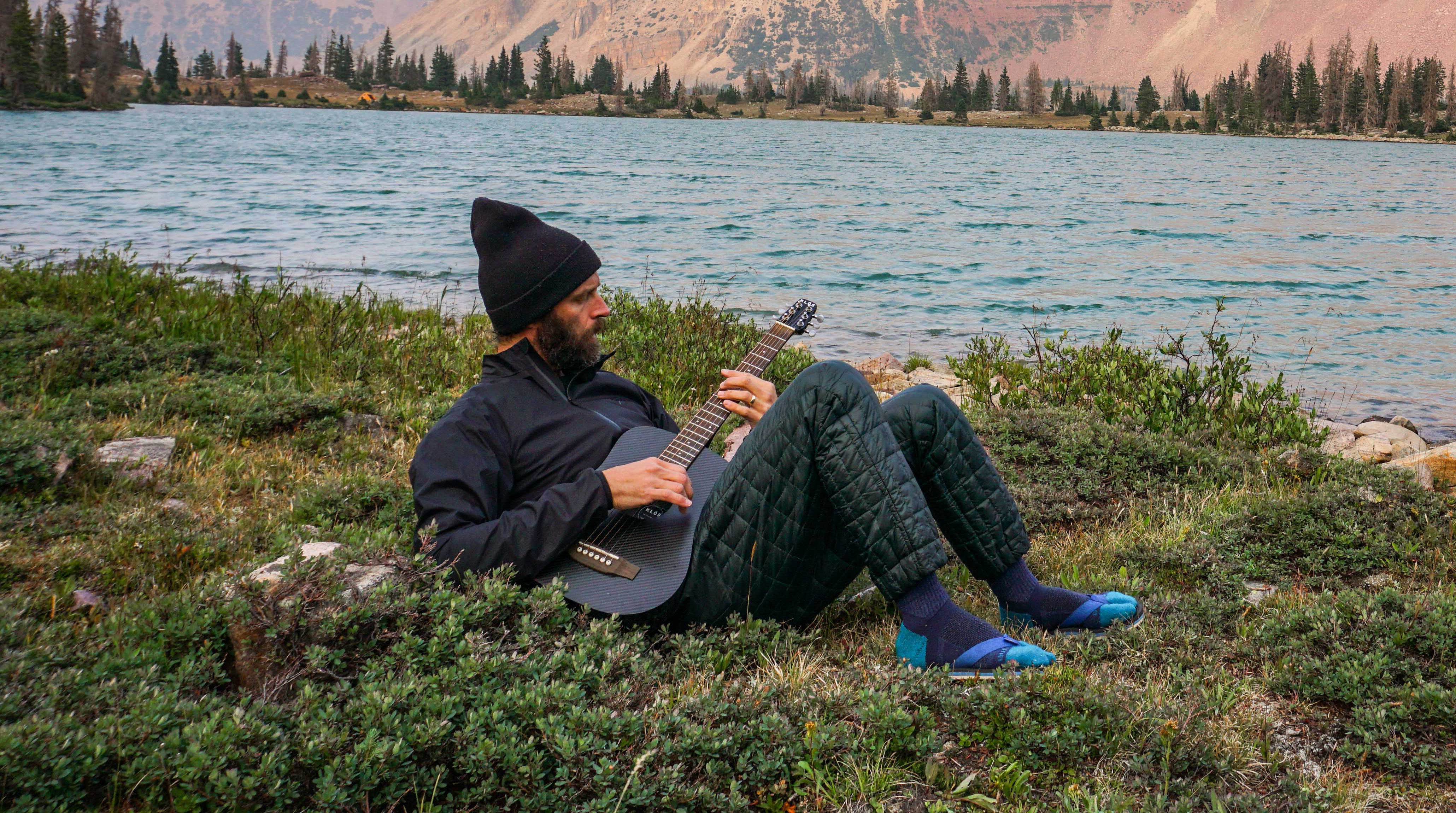
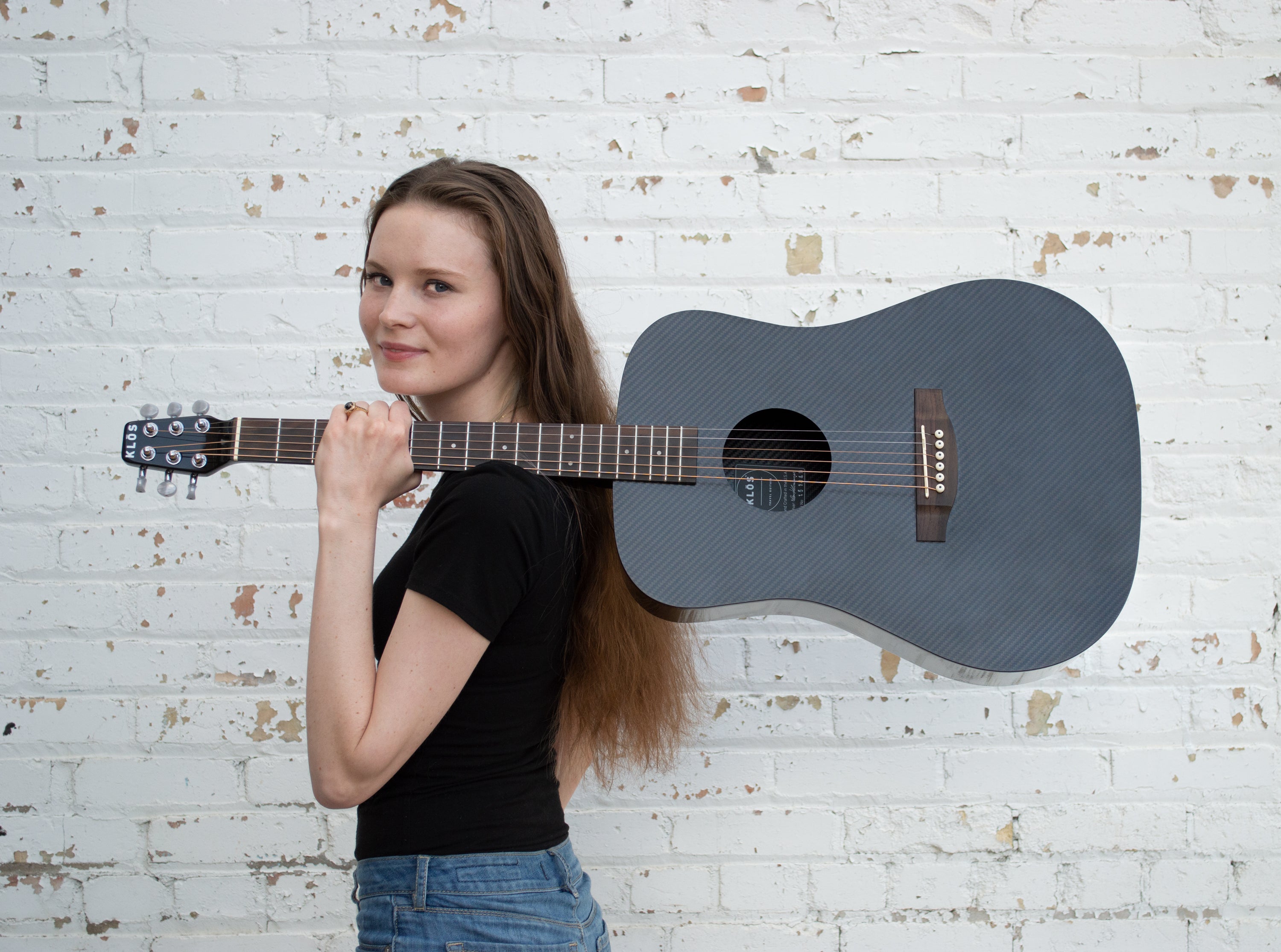

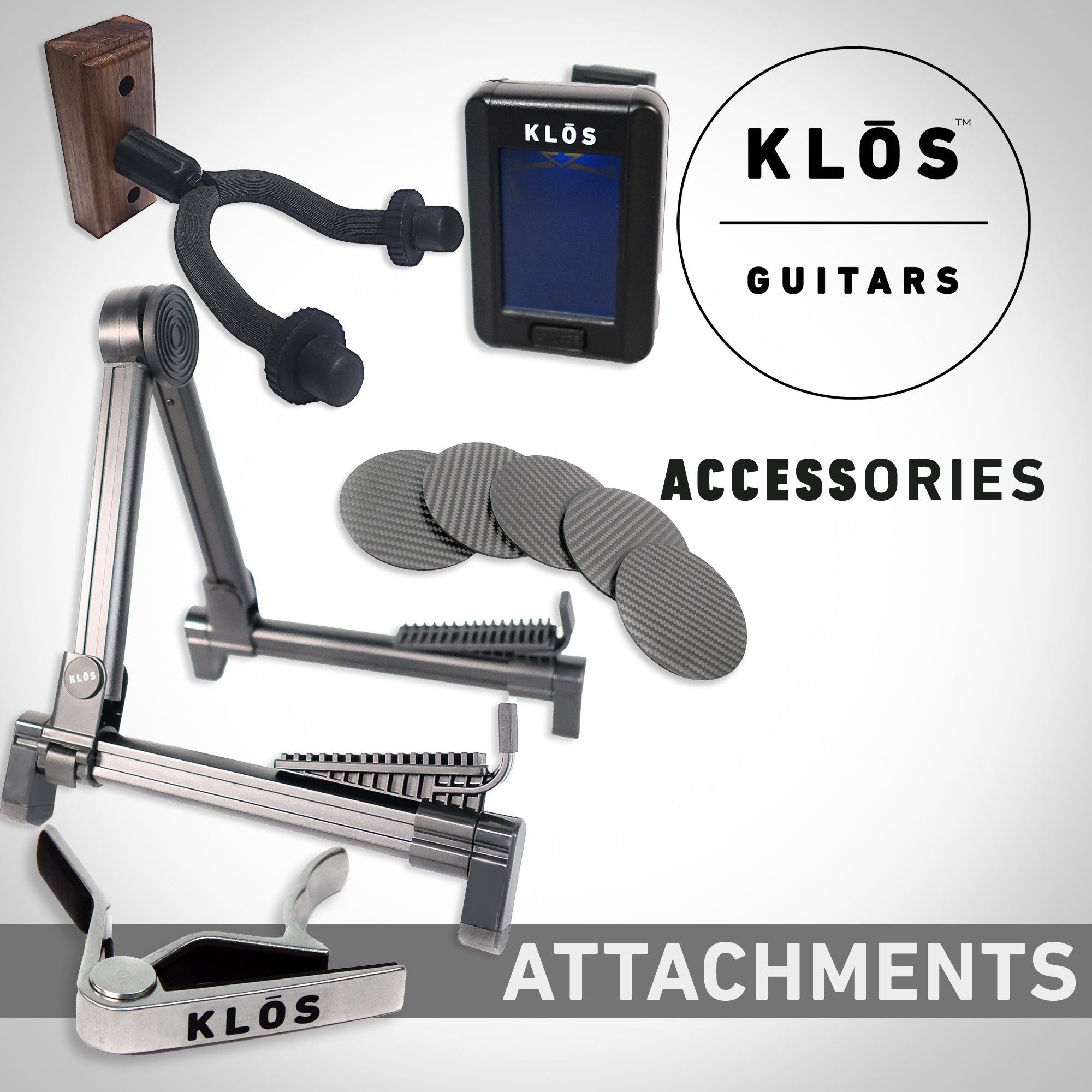
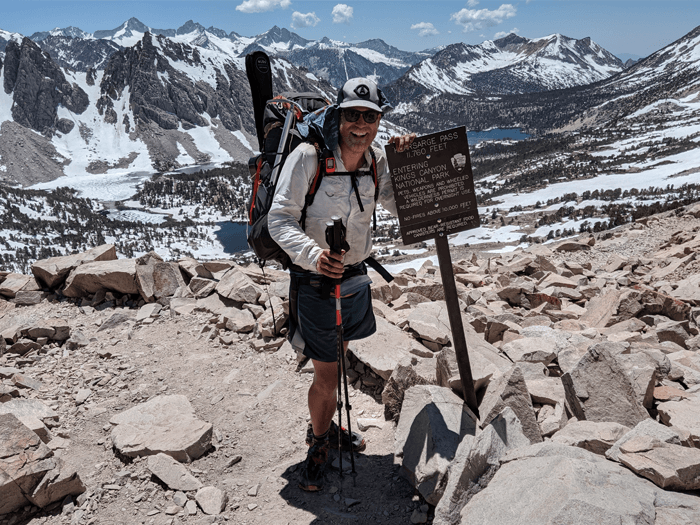


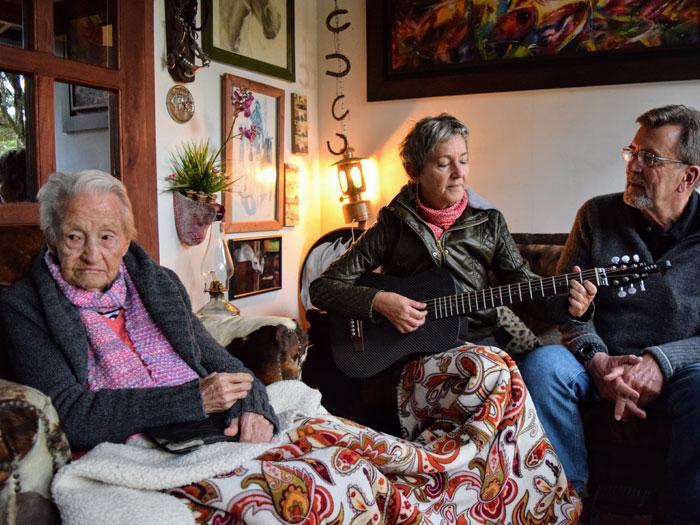
Leave a comment